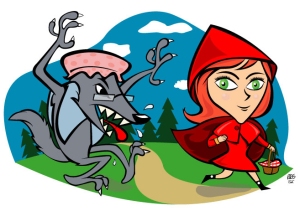But why is this the case?
Because personification is how humans go about understanding inanimate objects. We tend to personify things that we feel the need to have an emotional bond with. We name our cars, think of our boats as women, and treat our pets like children.
My mother used to guilt me into wearing certain sweaters when I was a kid by telling me they felt sad because “they never get to be worn like the other ones.”
We also personify what we don’t fully understand as a way to be rational about what scares us. We name hurricanes and atomic bombs. We take abstracts like God, death, and the devil and anthropomorphize them into concepts that we can deal with like the grim reaper and Mephistopheles.
You’ll notice that when we lend human personality traits to objects we are celebrating their individuality, uniqueness, and importance. By naming your convertible and talking about it like a woman, you are establishing that it’s different than all other cars on the road and that it’s of emotional importance to you. Conversely, when we want to dehumanize someone, we treat them like objects and strip them of their individuality and importance. Essentially, we un-personify them. Racists dehumanize people by saying “they all look the same” and sexists treat women like objects.
Companies build brands with human characteristics to help us find a way to relate to their products and to differentiate from the competition – essentially celebrating their corporate individuality.

NPO’s and causes are don’t sell products to which we can assign human traits, so what to do? We can sell the culture the way social movements do.
The paradoxical brilliance of social movements is that they’re able to build strong, unified cultures by encouraging individuality. Freedom of expression solidifies culture not the opposite. Aside from the traditional channels of expression for social movements like language, art, and press, web 2.0 has given us the “golden opportunity” to put the onus on all organization members to lead conversations and energize the cause. All members should be encouraged to contribute to blogs, share videos, and tweet about the cause…and it must unfiltered and authentic. Encourage self-expression through any and every channel.
Let your people build the organization’s personality for you. Without it, you’ll just be another inanimate object.
- For more information on building your internal culture visit BRANDEMiX.
- To join a free webinar on communicating the personality of your brand RSVP to webinar@brandemix.com

 My last post, regarding using stories to inspire movements by creating dissonance in people’s minds, created a lot of commentary.
My last post, regarding using stories to inspire movements by creating dissonance in people’s minds, created a lot of commentary. 
 In my last post, I began to discuss the importance of storytelling in turning a cause into a social movement. Movements use stories to instigate action, not just attention. So how can we use stories to transform passive donors into engaged activists? There’s a formula. This is part 1.
In my last post, I began to discuss the importance of storytelling in turning a cause into a social movement. Movements use stories to instigate action, not just attention. So how can we use stories to transform passive donors into engaged activists? There’s a formula. This is part 1.